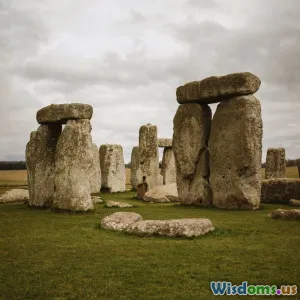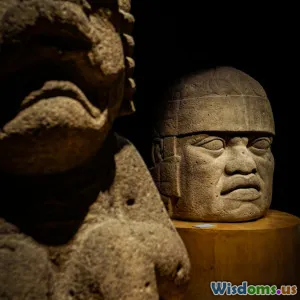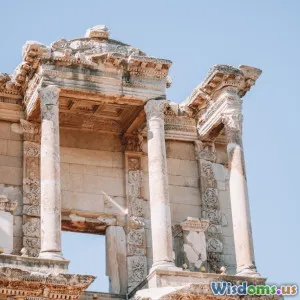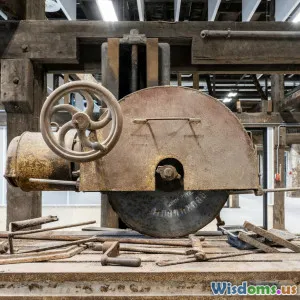
Cracking the Case: Who Built Stonehenge and For What Reason?
6 min read Explore who built Stonehenge and why, unraveling its mysterious origins and purpose through archaeological insights. (0 Reviews)
Cracking the Case: Who Built Stonehenge and For What Reason?
Stonehenge, one of the world’s most iconic prehistoric monuments, has baffled archaeologists, historians, and curious minds alike for centuries. Shrouded in mystery, this megalithic structure of massive standing stones sits amid the plains of Wiltshire, England. But who exactlly built Stonehenge, and more intriguingly, for what purpose? This article delves deep into the archaeological evidence and the latest research to decode the secrets behind Stonehenge’s origins and function.
The Builders Behind Stonehenge: Tracing Ancient Hands
Archaeological data suggest that Stonehenge was constructed in several stages between 3000 BCE and 2000 BCE. The question of identity leads us to the Neolithic peoples inhabiting prehistoric Britain. These ancestors were skilled farmers, craftsmen, and builders of their time, defying the notion of ‘primitive societies.’
The Neolithic Community of Wiltshire
Excavations around Stonehenge reveal traces of a settled farming community, engaged in complex social activities. Evidence points to these early Britons gradually shaping the monument over centuries:
- Radiocarbon dating places initial construction around 3100 BCE, when an earthwork enclosure was established.
- Later phases added standing sarsen stones, some weighing up to 25 tons, transported over 20 miles.
Archaeologists believe these communities possessed sophisticated knowledge of astronomy and engineering, enabling them to align Stonehenge with solstices.
Technological Marvel: Methods of Construction
Transporting and erecting huge stones without modern machinery remains a feat to ponder. Likely techniques include:
- Use of wooden sledges and rollers to move the bluestones from the Preseli Hills in Wales.
- Earthen ramps and levering devices to raise standing stones.
Recent experiments confirm that relatively small groups, around 50 to 100 people, could have accomplished these tasks with teamwork and ingenuity.
The Multifaceted Purpose of Stonehenge
Stonehenge’s function has long invited speculation. The structure’s precise alignments offer critical clues, suggesting it was far more than a ceremonial site.
Astronomical Observatory and Calendar
The monument’s orientation marks the summer solstice sunrise and winter solstice sunset with impressive accuracy. This suggests Stonehenge was used as an astronomical calendar:
- Tracking seasonal changes crucial for agriculture.
- Serving religious and ritual purposes during solstice festivals.
Noted archaeologist Sir Geoffrey Wainwright stated, “Stonehenge contains the earliest known evidence of cyclic prediction of astronomical events in Neolithic Europe.”
Burial Grounds and Ancestor Worship
Excavations uncovered burials and cremated remains dating back to its earliest phases. The site likely served as a place to honor ancestors, affirming social cohesion among early Britons.
Healing Center Hypothesis
Some modern researchers propose the 'healing site' theory. Stones brought from distant places were believed to possess spiritual or curative powers. This theory is backed by:
- Human remains showing signs of trauma and injury.
- Theories linking bluestones to medicinal reverence in prehistoric belief systems.
The Cultural Legacy of Stonehenge
Constructed over a millennium ago, Stonehenge represents the zenith of Neolithic monumental architecture in Britain. It embodies humanity’s deep desire to connect with the cosmos, death, and community.
Despite lingering mysteries, studies underpin the crucial role of prehistoric Britons in creating this symbol of innovation and ritual significance.
Conclusion: A Window into Prehistoric Genius
Stonehenge is more than a monument of stones; it is a tangible expression of early human creativity and spirituality. The Neolithic builders, through collective intelligence and ingenuity, constructed an enduring landmark that aligns astronomy with social and religious needs.
Today, Stonehenge continues to inspire awe and curiosity, bridging millennia and reminding us of the profound capabilities of ancient civilizations. By scratching beyond the surface, archaeology edges ever closer to fully cracking the case of who built Stonehenge and why—a pursuit that enriches our understanding of human heritage and the timeless urge to seek meaning in the stars.
References
- Darvill, Timothy. Stonehenge: The Biography of a Landscape. Tempus, 2006.
- Wainwright, Geoffrey. "Stonehenge and Its Astronomical Alignments." Antiquity, vol. 49, no. 194, 1975.
- Parker Pearson, Mike. Stonehenge: Exploring the Greatest Stone Age Mystery. Simon & Schuster, 2012.
- Atkinson, Ronald J. C. Stonehenge. Penguin Books, 1956.
Further Reading
- "The Bluestones of Stonehenge" – National Trust official publication.
- Archaeological reports from recent excavations by the Stonehenge Riverside Project.
Rate the Post
User Reviews
Popular Posts





















